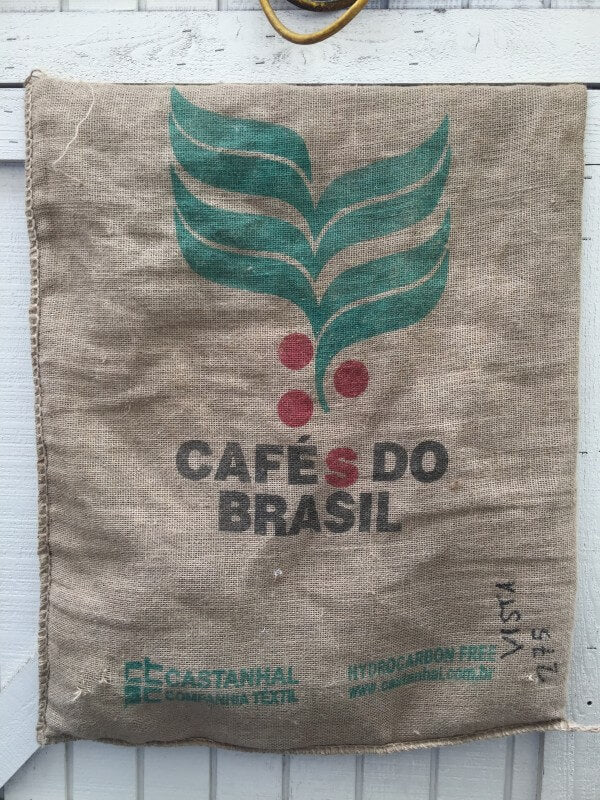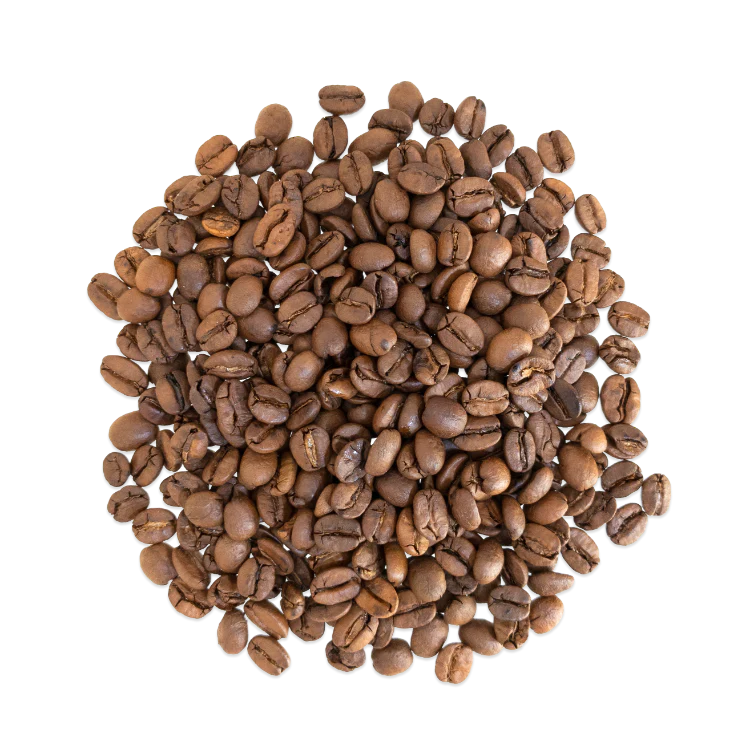One of the best reactions we get from our customers is when they enter the back of our store and see the stacks of coffee bags. It really makes you feel like you are stepping inside a different world. Coffee bags have such a unique and interesting story to them that I thought I would share them with you. Let's start with the basics.

Coffee bags or Burlap in the US, is a woven fabric made from the skin of the jute plant. Jute is great because it is cheap, fairly soft and has long fibers used to make twine or bags.

The International Coffee Organization requires that each burlap bag contain a specific identifier known as the ICO Mark. The identifier is a set of numbers that help define where the bag came from.
The first set of three digits represents the country code. The second set of four digits represents the exporter or grower, and the third set of four digits represents the parcel/lot number. The example above is from Kenya.
Country codes are the easiest to find, while the exporter/lot are very unique and not easily available. Here are some country codes for some of the coffees we own:
Brazil - 002
Costa Rica - 005
Kenya - 037
Thailand - 140
Now comes the cool part. The different designs. As you can imagine each bag has a unique design to represent the country, or the processor, and sometimes the farm itself. Let's take a look at the top bags that get the most attention.

This one has a nice large image of the continent of Africa. While not as ornate as some of the other bags, what is unique about this particular bag is what is inside (see next picture).

The green plastic-looking bag is called a GrainPro. This bag helps keep the coffee fresh and also protects the beans from spoiling and keeps bugs out.

One of my favorite designs. This coffee comes from a sub-region of Tarrazu. The red cross is a trademark symbol of the Conquistador coffee growing region.

The first thing you notice is the House Of Toraja image boldly displayed on the front of the bag. Toraja are an ethnic group indigenous to a mountainous region in Sulawesi, Indonesia. The image represents a Pa'ssura, or writing, which are used to express social and religious concepts.

On the Island of San Cristobal in the Galapagos Archipelago, you will not only find finches, tortoises, and iguanas, but coffee. This one has a huge colorful tortoise that covers the front.

The Galapagos coffee has an additional paper lining, similar to the GrainPro used to prevent bugs from getting inside, and keeping the coffee fresh.

Our Vista Alegre beans come in this bag. A Big beautiful symbol of a coffee leaf with three red cherries represents this bag. These bags also come in a grain pro to keep them super fresh.

Our Jamaican Blue Mountain beans come in the most unique "bag" yet. A wooden barrel. These coffee beans are the only beans in the world that are packaged in this manner. My father and I have to literally pry off the cap with a hammer and remove the nails.

Photo credit: Bigstock









